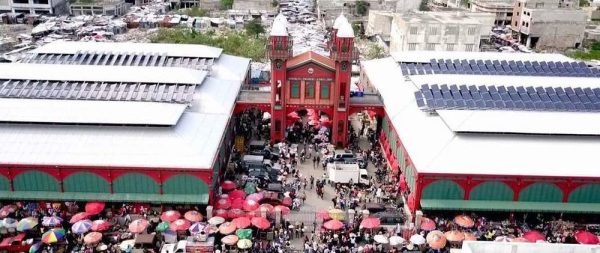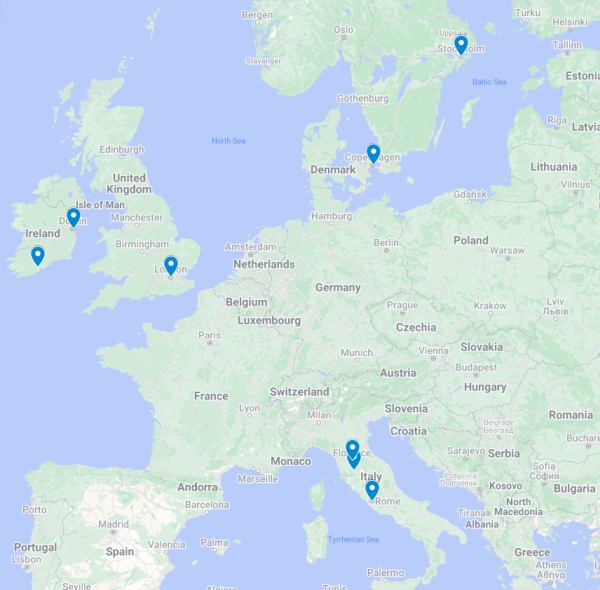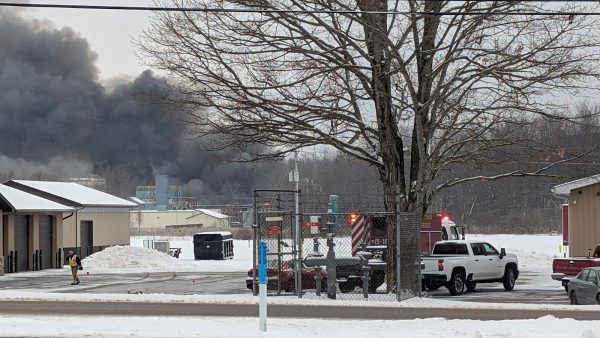Climate change fuels unprecedented floods in Pakistan
Global weather systems feed massive monsoons, 33 million affected
About one-third of Pakistan is currently under water in the most intense wet August weather since the country began keeping weather records in 1961, according to NPR.
“This goes out to all the Allegheny students,” said Nahayan Minhas, ’24, an international student from Pakistan. “I hope when you read this, you read it all the way through and see what actions your country … takes and the consequences that these actions have for people all the way on the other side of the world.”
Although Pakistan has a monsoon season every year, this year’s storms have only been exacerbated by a myriad of climate-related issues.
Assistant Professor of Environmental Science and Sustainability Matthew Bethurem explained that on top of the regular La Niña cycle, which increases precipitation, the global rise in temperature caused an intense heat wave throughout Pakistan in the early summer, and the biggest effects of it are just beginning to be seen.
“Pakistan was literally the hottest place on Earth — at least (the hottest) inhabited place on Earth — for a period of time,” Bethurem said. “On that front, that extra heat is going to do things like melt the glaciers in the Himalayas. Pakistan is a very mountainous country. Glaciers feed into the Indus River, which is a major river that runs through Pakistan. When you get additional meltwater, that’s going to add to the volume in those waterways. On top of that, hot air holds more water vapor.”
Bethurem explained that the increased moisture within the entire region and an expectedly more powerful monsoon season created a nightmare situation for Pakistani citizens.
“There’s at least one million people who’ve been displaced from their homes and their villages,” Minhas said. “33 million people in total are affected. Our (crop) stores are dwindling, we have a food crisis on top of it as well.”
Both Minhas and Bethurem see the floods as disproportionally affecting Pakistan. The country as a whole contributes less than 1% of global greenhouse gas emissions, but is punished because of their geographic location.
Bethurem explained that this is a textbook case of climate injustice, one of his primary fields of study.
“(Environmental crises) are becoming more frequent, more and more people are being impacted,” Behturem said. “You have to think about what the aftermath of that looks like for people, if these places become unlivable. What’s that lead to in terms of people being forced to flee those areas potentially permanently? We’ve got some ugly examples in recent years of how poorly the international community — particularly in the West — reacts to refugees of any type, including here in the United States.”
Minhas explained how privileged he feels to be able to study in the states and personally remain unaffected materially. Calling his parents daily for updates has become the norm, and, though they continue to remain mostly unaffected, Minhas continually checks the news for updates.
Although his personal connections back home are safe and secure, Minhas is still concerned for the future of his homeland. He expects the flooding to only compound economic issues already present, as Pakistan is deeply in debt.
Bethurem said a couple of things should be done simultaneously to limit further consequences that Pakistan and other countries might face in the future. The first and most obvious step he presented was immediately throwing the brakes on as many greenhouse gas emitters as possible.
“There’s been a longstanding situation in the international community where the wealthy nations of the world, the ones that are most responsible for creating the climate crisis, … have for years and years now, as part of different international agreements —like the Kyoto Protocol and the Paris Agreement — been pledging money to the developing nations of the world to help them not only develop clean energy infrastructures so that they don’t have to burn fossil fuels as they themselves develop, but to to aid with those climate adaptation measures,” Bethurem said.
A climate adaptation measure is a physical solution to issues caused by climate change, according to Bethurem. He explained that adding tree canopies in cities is one such measure, as it adds shade and keeps light and heat from being trapped within the urban area.
While Minhas appreciates the idea of aid for his country, he hopes that donors carefully consider how they choose to donate their money and resources.
“Any donations work, although I would say what would work the most is if people can directly donate resources or donate specifically to organizations who are using that money for resources, because unfortunately in Pakistan we can’t really trust the politicians to use the aid money properly,” Minhas said. “I feel like people who want to know can also take on a bit of personal responsibility and make sure as best as they can that the people they’re donating to actually put (the funds) to good use.”

Roman Hladio is a senior from Wexford, Pennsylvania. He is studying English with a creative writing emphasis, and completing requirements for a Journalism...












